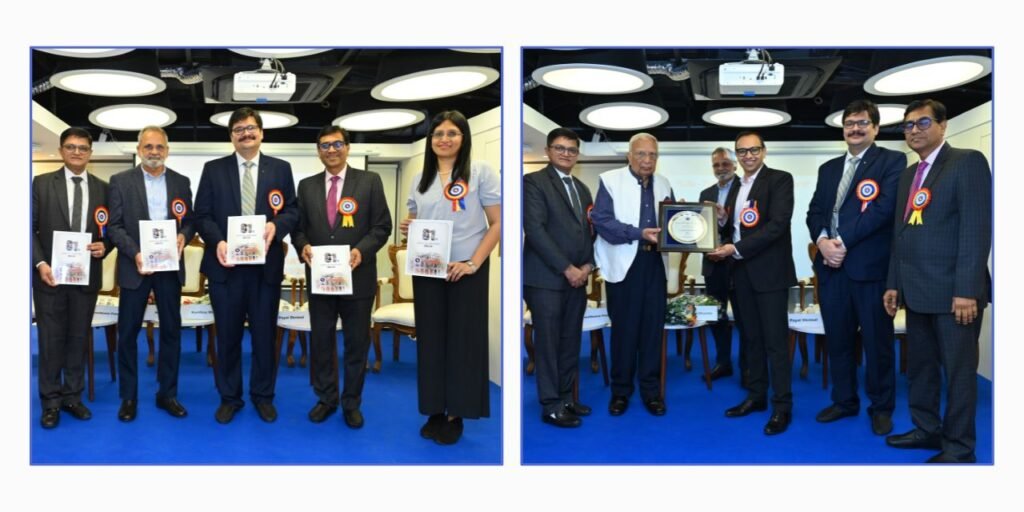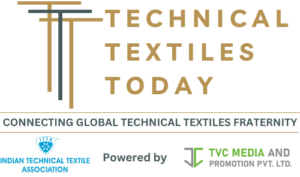
Achievement Award” and connects Indian TEI with Garment, Fashion and Retail Industry. The president of ITAMMA, Mr. Bhavesh Patel, stated: “I am pleased to announce that ITAMMA is undergoing a digital transformation and has established a marketplace and ecosystem with Sambuq.com’s assistance to assist our members in expanding in the difficult global market of today.” Sustainability and conscientious production.
Achievement Award” and connects Indian TEI with Garment,Fashion and Retail Industry. Through technological advancements, quality enhancements, and cost-effectiveness, the organisation looks for innovative ways to help members become more competitive in both domestic and international markets. Consequently, the Association has changed its position from being a facilitator to a proactive partner by using smart working and digitisation.
“As we all know, we are in an era which is driven by fast-paced technological developments, demanding high levels of creativity and innovation,” said Mr. N. D. Mhatre, Director General (Tech), in his introductory remarks. This is a moment that requires ethical and sustainable advancements as opposed to techno commercial advancements in textile equipment and accessories, which are particularly acceptable to the crucial User Industry stage of clothing, retail, and fashion. For information and product requirements based on the global market, this links the producers and processors of textiles (fabric, yarn, and fibre) and machinery, spare parts, and accessories with the apparel, retail, and fashion industries.
“How the Textile Machinery and Accessories industry moves forward to fulfil the expectations of the Garment, Fashion, and Retail Industry” was the topic of Mr. Anil Singhee’s guest honours address. He is the managing director of ADDON HOLDINGS PVT. LTD. Mr. Singhee explained that it is critical to comprehend the chain of production from the machine manufacturer to the fashion designer, the garment manufacturer, the retailer, and the machine manufacturer. point). It’s also important to understand the chain’s thoughts, as machine manufacturing is a process-driven endeavour in which the goal is to develop a device that can reliably do the tasks every day. They are determined via standardisation and computations. Fashion design, on the other hand, is largely motivated by innovation and strives to produce something fresh every time. Because of this mingling of two extremes, the textile industry is a particularly fascinating sector with a special role for the development of the nation.
Regarding potential, he stated that there is still a lot of room for growth in the Indian apparel manufacturing industry, which is mostly driven by high local demand and further bolstered by export opportunities. We have not yet established a worldwide brand from Bharat, but we continue to devote a high-end for Western brands. On the other hand, we need to have a longer-term strategy because we have the workforce and the engineering skills.
In terms of sustainable activities, the apparel sector is ahead of the curve, requiring the development of machinery to reduce water consumption, energy consumption, material waste, create a safer and more ergonomic workplace, recycle, and upcycle. quicker support for replacement parts and customisation, with a focus on utilising 5G and IOT to leverage Smart Manufacturing.
This will be an excellent first step towards automation and digital integration to improve chain visibility, facilitate quicker decision-making, and boost efficiency. As we look to the future, we must begin considering R&D investments at all scales. particularly giving current computers a competitive edge in terms of customisation through upgrades. Continue to hear what your consumers have to say, then implement a cycle of continuous improvement. Use a modular system to save lead time and provide quicker reconfiguration. production, quicker reaction to market shifts, lower inventory levels, Manufacturers should be at the forefront of developing an ecosystem. Printing and customisation (particularly at the retail level), on-demand production, seamless garment manufacturing, and folding machines are examples of new-age manufacturing.
Generally speaking, our machine manufacturers should broaden their reach by attending international events in order to determine where our opportunities are. Even now, the vast majority of machines, ranging from the most basic to the most intricate, are either constructed or imported. Our priorities should be developing advanced machinery and providing excellent after-sales support.
ITAMMA must take the initiative to establish a “Sample Industry,” much like the real estate sector displays a “Sample Flat” that illustrates all the procedures from beginning to finish and the capabilities that allow for the use of virtual technology.
At WHEF, we are working to move the textile industry from the Heavy Industry category to the Garment Industry so that the government would give this sector more attention and support as it grows.
To sum-up/conclude, Key actionable is to Invest in R&D, Listen to your customer, Keep upgrading by increasing exposure, Focus on Sustainability & Smart Manufacturing, Develop an ecosystem and Build your brand The secretary of the Textile Committee of India, Mr. Kartikay Dhanda, stated that the committee has taken several steps to promote the circularity and sustainability of textiles. Geographical Indication (GI) for textiles, handlooms, and handicrafts is also the subject of several efforts under Intellectual Rights to Property. The Textiles Committee’s laboratories are being upgraded to international standards in light of the current worldwide needs for numerous certifications.
Ms. Payal Shrimal (MMR Region’s Channel Sales) Presentations on “Transforming the Textile Industry with Sustainable Solar Power” were given by Mr. Mahesh Kulkarni, MNM Solar Power Systemst Channel Sales Manager TATA POWER SOLAR and Tata Power Renewable Energy Limited. Solutions” provided information on TATA Power’s numerous initiatives and the advantages that the textile industry has seen as a result of the installation of TATA POWER SOLAR Projects.
In his parting address, Mr. Purvik Panchal, President (2022–2023), emphasised the steps ITAMMA took during his term in the areas of digitalisation and social media campaigns. In his parting address, President Nimesh J. Shah (2023–24) emphasised the actions done by ITAMMA to make it more self-sufficient and stronger financially.
Additionally, ITAMMA published its “81st Annual General Report,” which was followed by power slide presentations on “Glimpses of ITAMMA’s activities during 2023/24” given by Mr. N D Mhatre, Director General (Tech).
Jineshbhai, also known as Mr. J H Shah, Trustee & President (2010–11), received the “Life-Time Achievement Award” from the Guest of Honours, together with all other office bearers and ITAMMA Managing Committee members. His father, the late Shri Hiralal L. Shah, was one of the founders. was the first Gujarati Indian to travel in 1917 and earned an M.SC. from Columbia University in the United States in 1923. In 1958, he was chosen President of this Association, and the former Indian Prime Minister Shri Lalbahadur Sashtriji named him to the Import Advisory Textile Committee.
The managing director of M/s Britex, Mr. Jinesh H. Shah, served as this association’s president from 2010 to 2011. Since 2011, he has served as an ITAMMA trustee. He has served on the Indian Merchant Chamber committee for the last eighteen years and is the vice president of the All India Jain Swetamber Conference and a number of other nonprofit organisations.
His firm has three production departments in Bangalore, Surat, and Bilimora that provide hydraulic and automation systems as well as material handling systems. M/s Britex Industries currently owns a collection of businesses and has merged with M/s Wiperdrive Engineering.
Jineshbhai’s vision for the Association was to make it more financially strong, which is a key component in enabling the Association to intensify its efforts both domestically and internationally for the benefit of its members. Jineshbhai took the effort to establish a number of associations. matters, creating an impressive revenue stream for the association and enabling it to become self-sufficient, providing it with the chance to offer its members innovative and value-added activities and propelling it to greater heights in this difficult and cutthroat global marketplace.
